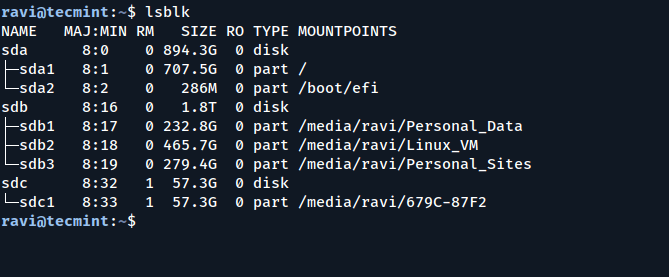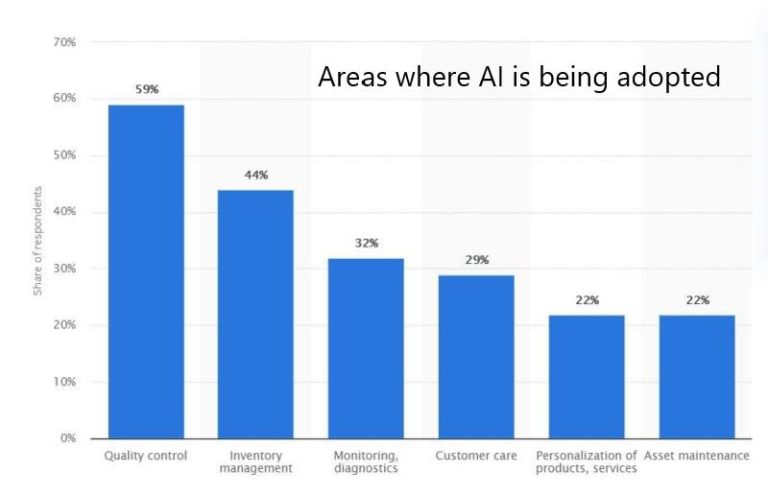When purchasing or designing software, there are two options from which to choose. Users and development teams can choose either open source or closed source. These names originate from the source code used to create each platform, but what is the difference between open source and closed source software?
Consider this article your go-to guide for comparing open source vs closed source applications. We’ll be covering:
- What Is Open Source?
- What Is Closed Source?
- Similarities Between Closed Source vs Open Source.
- Differences Between Open Source vs Closed Source.
After finishing this article, you’ll have a clear understanding of the difference between open source and closed source applications. Whether considering your next big software purchase or deciding which path to take for your next development project, you’ll have the knowledge to confidently choose which platform is best for you.
What Is Open Source?
Open source software allows a community of developers or users to access and edit an application’s source code. Although open source applications have become more popular in recent years, it may surprise you to learn that open source was also responsible for the beginning of computer software as we know it.
When original computer systems like the IBM System 360 dominated the computer world, all software was open source. Essentially, anyone could take and modify a software application’s source code.
Since software development was in its infancy, the engineering community was very collaborative. Developers would constantly swap solutions for the run errors and bugs they would encounter.
Another reason for this collaboration was the nature of most early software applications. Most software systems created during this early stage of computing were created for schools and other government agencies. Solutions were shared between developers or user communities to get these programs up and running quickly and efficiently.
Today, open source software has undoubtedly evolved. These applications can now take advantage of the benefits of the cloud to further develop their platforms. User communities can collaborate faster and more effectively thanks to cloud sites and other innovations.
Additionally, open source users can leverage virtually unlimited resources for backup storage. With the cloud, companies no longer have to worry about one mistake or natural disaster taking out all of their customer data.
Pros of Open Source
While some may see an issue with giving many users access to an application’s source code, there are significant benefits. Some of the strengths of open source vs closed source applications are:
- Improved quality. Since open source software leverages a community of developers or a larger community of general users, diverse perspectives often catch more bugs or run errors and add more features than a single development team. Additionally, developers have a vested interest in collaborating to improve the very software platforms they use themselves.
- Lower Development Cost. Because of the collaborative, community nature of open source software development, it costs less to produce these applications. Companies don’t have to incur the lofty expenses of sophisticated IT hardware and the salaries of a full-time development team. Instead, they can rely on the brilliant minds within their developer or user community to push the project forward.
- Open Source is more secure. Any bugs or errors that pop up are being solved by several developers simultaneously. In larger communities, the number of developers collaborating can be even higher. With so many eyes on a given problem, they are typically solved more quickly and efficiently than by a single support team.
- Unlimited Support. Since the integrity of the software relies on the community, there is no shortage of support. Even if a company were to go out of business, the software can persist as long as the code remains available. If there’s enough interest in a particular application, community members will pick up where the project left off and keep the code going.
While there may be some concerns regarding security, private networks and private clouds have grown to include modern security features. LiquidWeb also can help on this front. Our partners and third-party vendors can help provide additional security for private cloud to protect the critical information that powers your business.
Cons of Open Source
Naturally, there are some drawbacks to consider when weighing the difference between open source and closed source. This is why knowing the end goal for your software project or purchase is essential before choosing a platform.
There aren’t too many to consider, but the cons of open source platforms are:
- Problems troubleshooting less popular apps. Users dealing with lesser-known software applications may have problems finding end-user support. If the community of users isn’t large enough, the number of developers available to troubleshoot bugs and other errors will be slim. Additionally, open source platforms usually don’t supply an internal support team. Therefore, without a community of developers to come to the rescue, software support is virtually non-existent for older or less popular applications.
- Challenges finding and fixing problems. Communication is a common problem within open source communities. Frequently, developers do a poor job of reporting the open source code they use to fix bugs in the software. To fix this issue, some communities have implemented an SBOM, Software Bills of Materials. This is a registry of the software routines, libraries, and other code snippets used in any program. This SBOM helps users determine what component versions will help their program run more efficiently.
Leveraging the power of collaboration provides an impressive list of advantages for open source vs closed source. However, although closed source is different, that doesn’t necessarily mean it’s the lesser option. Each platform has its appropriate time and place in the software world.

What Is Closed Source?
When looking at closed source vs open source platforms, it helps to think of them as opposites. While open source software relies on collaboration and group access to the source code, closed source platforms rely on the source code’s encryption and protection.
Users of closed source software are prohibited from modifying or editing the application’s source code. In fact, doing so can void the software’s warranty and, in some cases, even result in legal consequences. If companies aren’t leveraging the cloud, they may choose to run closed source software on dedicated servers to maintain the desired level of security and protection.
Pros of Closed Source
So, what is closed source software used for? Here are some of the benefits consumers and software companies can expect from this platform:
- Profitable for creators. The business model for closed source software is simple. The more units a software company can sell, the higher its revenue. Introducing the subscription model makes closed source software even more profitable. Software companies now have a simple, recurring revenue stream from each subscription they sell.
- High-quality interfaces. Since closed source software companies expect you to pay upfront to use their platform, a lot of money is invested into how the software looks and functions. The price tag may be higher, but users can expect a sleeker, more intuitive interface and a more thoughtful user experience.
Cons of Closed Source
In addition to preventing collaboration and input from various perspectives, keeping source code protected and encrypted presents some other challenges. Customers or development teams weighing the option of closed source vs open source need to consider:
- Lower level of security. Contrary to what you may think, closed source applications are less secure than their open source counterparts. Since you’re only relying on one company or software team to distribute bug fixes and security patches, problems can take longer to resolve. Major software providers like Microsoft usually release new security updates and patches monthly. While these updates cover most problems, they may not fix the most recent issues users are experiencing.
- More expensive. Closed source programs are often priced higher than open source platforms. Software companies following the open source format will often offer a free version of their software. When it comes to closed source software, however, there’s very rarely a free version available. End-users also incur the software company’s costs for their development and (research and development) R&D teams.
- What you see is what you get. Closed source software leaves very little room for modification or customization. You may be out of luck if you need something a little different to meet your business’s specific needs.
- Lack of support. Closed source platforms rely on an internal team of developers. It’s up to this team and, ultimately, the software company if they choose to continue updates and development of the platform. As a result, support for closed source software can be discontinued at a moment’s notice. In contrast, support for open source software remains available as long as the user community remains active.
Companies like Microsoft are still taking advantage of the closed software model. Selecting a closed source model may be the perfect option depending on the software you’re trying to create or purchase for your business. Carefully consider the above pros and cons as well as the goals of your development project or purchase before making a final decision.
Similarities between Open Source and Closed Source
There aren’t too many areas where open source and closed source software platforms come together. Essentially, they are opposite sides of the software coin. One possible facet where they’re similar is the area of customer support.
Open source platforms have great, in-depth customer support for popular apps with many users. However, users may struggle to find support if an open source application is older or less popular.
Closed source software is similar in this regard because support is dependent upon the internal team of the responsible software company. That team may decide to stop releasing updates or abandon a platform at any time. Users may log in to their dashboard only to find that a particular closed source application has been discontinued. But, except for a potential lack of support, you couldn’t find a better example of opposites than comparing open source vs closed source software.
Differences between Open Source and Closed Source
While it takes some digging to find similarities between the two platforms, the differences between open source and closed source software are more obvious:
| Open Source | Closed Source | |
|---|---|---|
| Innovation | Unfettered access to view and modify code leads to higher levels of innovation. | Source code is protected and encrypted. Innovation relies on the R&D of the internal software team. User communities can submit ideas, but they may not be implemented. |
| Usability | Usability experts do not review user interface/user experience (UI/UX). The argument is that interfaces cater more to developers than less knowledgeable users. | UI/UX is a primary focus. Millions of dollars go into researching user habits and designing the interface accordingly. |
| Security | Software is rarely validated or peer-reviewed. Developers could easily insert malicious files into the code. | More secure since development is restricted to a single, internal team. The risk of “backdoor” bugs or viruses is lower, but no security is foolproof. |
| Cost | Generally lower cost. Usually offer a free version. But users may incur additional charges due to add-ons. | What you see is what you get. Cost is fixed upfront. Higher initial price tag because more goes into design and development. |
| Service | Service and support rely on the user/developer community. Multiple minds working on the same problems. | Service and support are provided by the software company’s internal team. Updates or support may stop at any time, but leaning on technical professionals may benefit users with little technical skill. |
Choosing What Is Right for You
Now that you know the difference between open source and closed source software, the ball is in your court. Consider the points we’ve covered above in this in-depth guide, and you’ll be able to confidently choose the best platform for your next project or purchase.
If you need any more guidance, LiquidWeb is here to help. Contact one of our Most Helpful Humans in Hosting® anytime (24/7/365) with any questions you may have.





